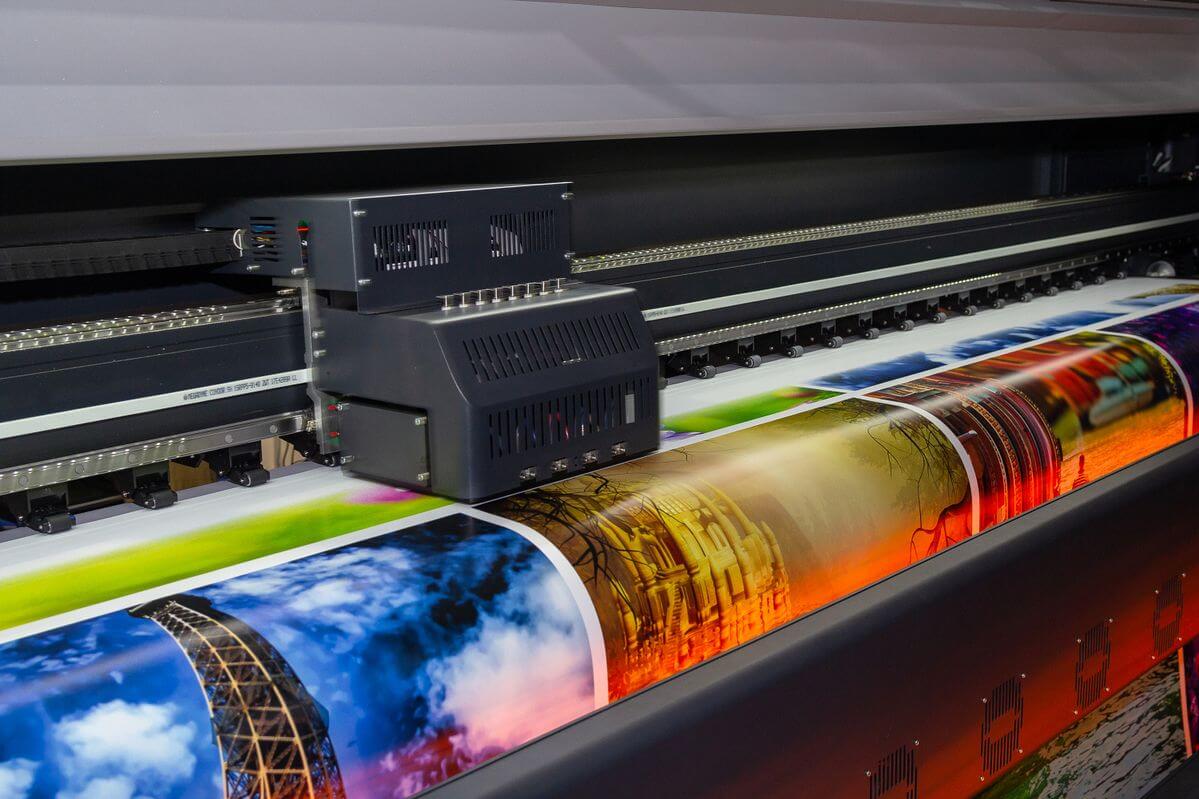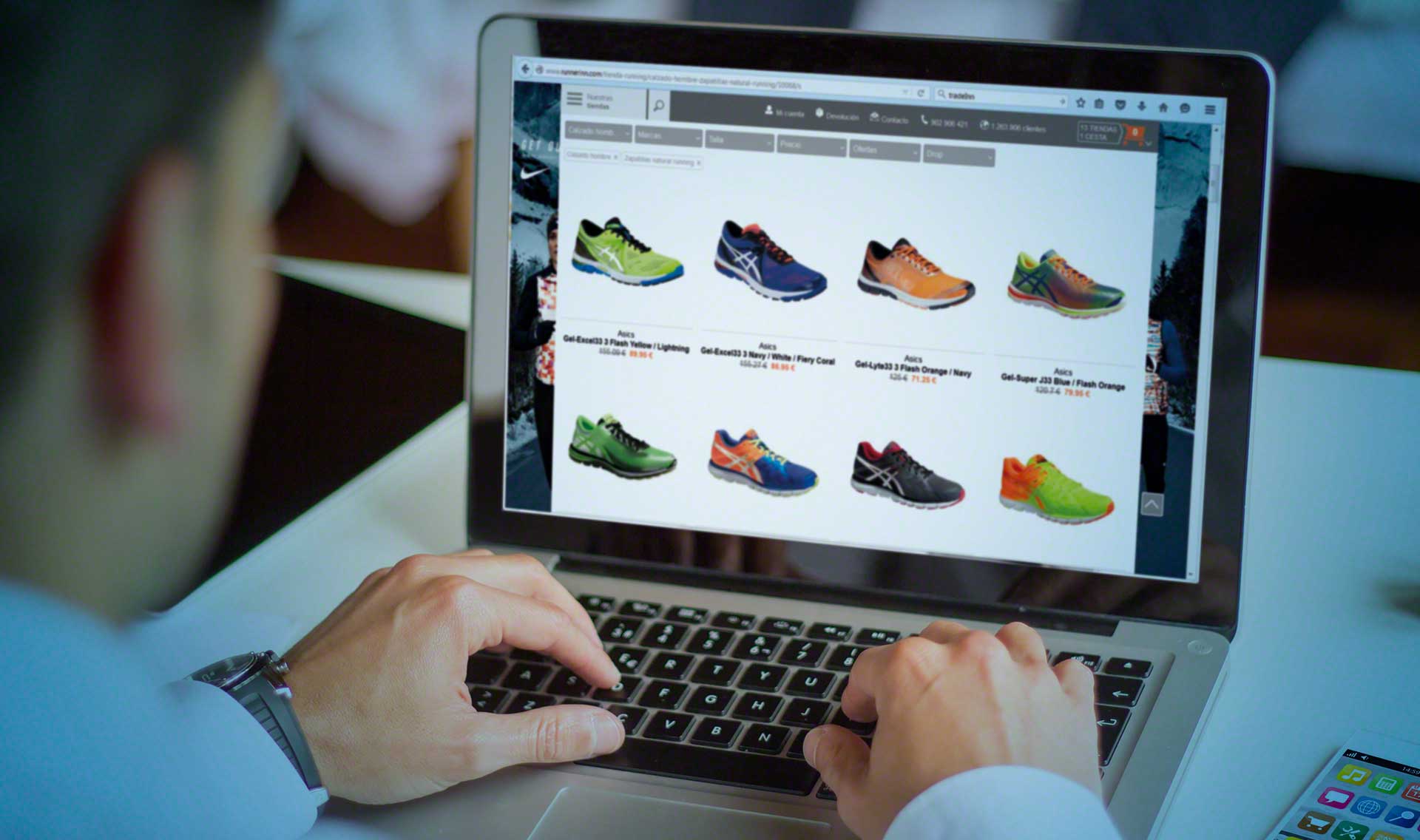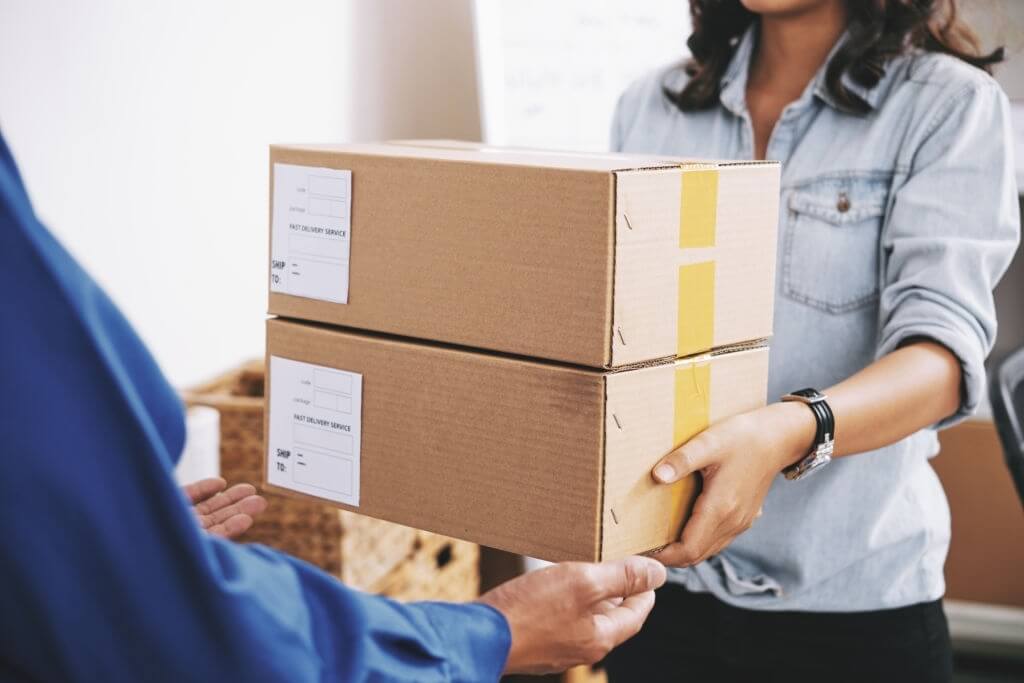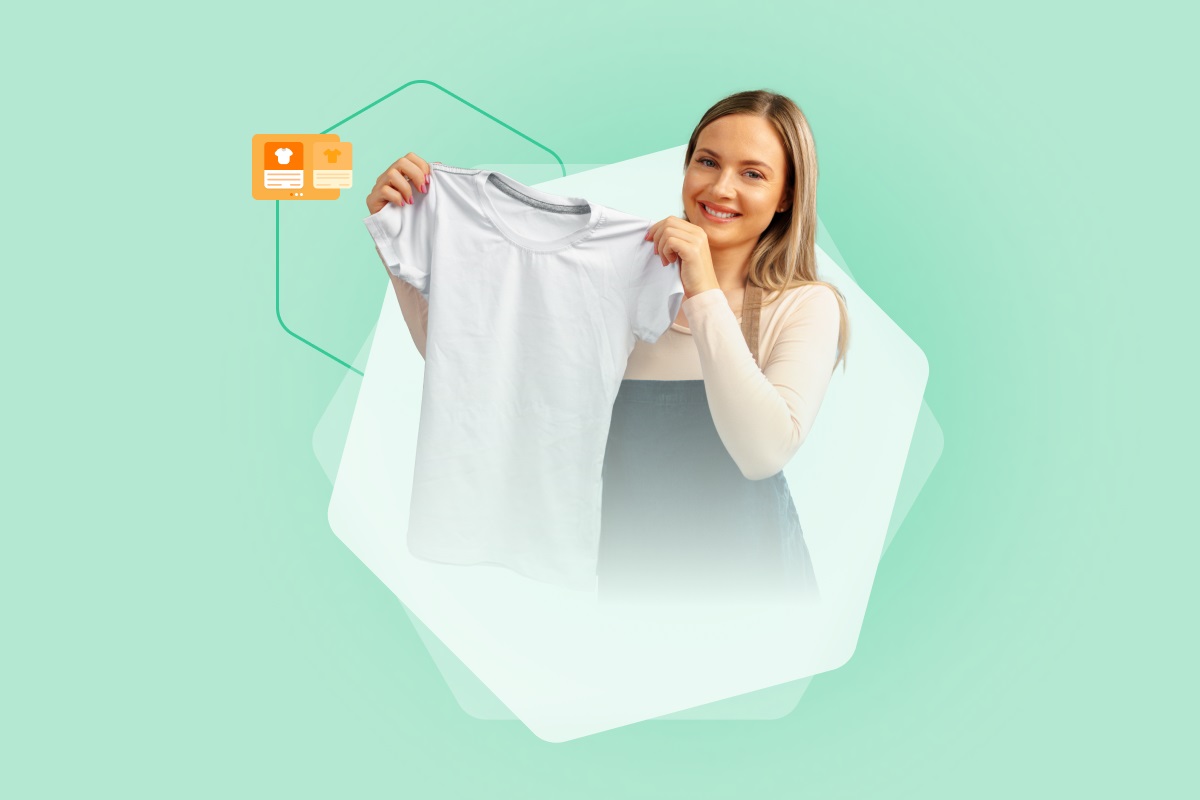Table of Contents
Nowadays, more and more e-commerce businesses appear in the international marketplace.
They always attempt to come up with more creative and innovative ideas to create new trends and catch customers’ eyes.
Thus, a successful business is sometimes regarded as one that has personalized products, a recognizable brand, and a high level of customer loyalty.
So, if you aim to reach these objectives, print on demand ( also called POD) will be a powerful tool to help your business flourish.
However, you may wonder what on-demand printing is, how it works, and what its pros and cons are.
This article will deal with all of your inquiries to help you be ready and successfully start your business with POD.
What is Print On Demand (POD)?
Print on demand (POD) is a printing technology and business method in which it doesn’t print any copy of products (or other types of documents) until receiving an order. Thus, POD usually allows for single or small-quantity printing.
While other sectors have developed the build-to-order business model, “print on demand” could only emerge after the advent of digital printing.
That’s because manufacturing single printing products using traditional printing technology wasn’t cost-effective and convenient.

“Print on demand” emerged after the advent of digital printing.
In terms of running an e-commerce business trading designed items, you can use print on demand to develop custom designs for a wide range of products. As a result, you can sell them under your own brand.
How can you differentiate between Print on Demand and Dropshipping?
Lots of printing companies have promoted either POD or dropshipping service, or both – like Printful. You can read more about Printful’s services in my blog: “Use Printful print on demand to Start Your Business in 2022”.
Because these two terms can make you confused, it’s essential for you to distinguish between them to pick out the most suitable supplier.
To put it in a nutshell, the main difference between dropshipping and print-on-demand is that:
With dropshipping, your supplier makes no changes to the product, and shipping time is usually faster. Whereas with print on demand, your supplier creates the product according to your custom design, and shipping time is usually longer.
Who can choose Print on Demand for their e-commerce business?
1. Creators

You may sell custom items with your own design, artwork, and other creative assets.
As an independent artist or an influencer such as a Youtuber, Tik Toker, video gamer, and more, you want to make customized items. It means you may sell custom items with your own design, artwork, and other creative assets.
Or, you can choose POD if you want to create high-quality goods that represent your school, company, and sports club as well.
2. E-commerce entrepreneurs

You can open an online store and sell personalized items through e-commerce platforms.
You should go for print on demand industry if you want to open an online store and sell personalized items through e-commerce platforms.
In this way, you can save time on product fulfillment and inventory to concentrate on building your business brand and customer services.
How does Print on Demand work?
The process of on-demand printing is based on your business requirements and it varies from one to another.
Still, we’ll picture the process step by step to help you have a vivid image in your mind.
1. Set up your store
If you want to start selling your products, you need to have an online store for customers to know who you are and what you are offering.
Depending on your POD platform, there are three circumstances in total for you to choose from:
1.1. Connect the POD service to an existing store.
Printful and Printify, for instance, may link to e-commerce platforms such as Shopify, WooCommerce, and Etsy. If you already have an online store, you can connect it to your preferred POD platform and start selling from there.
1.2. Use the available platform or marketplace on the POD site.
In case you haven’t had an online store, you should select a POD service with an established marketplace. You may create a profile on sites like Printful, Zazzle, and Gelato. They’ll sell and fulfill things on your behalf.
1.3. Use the custom API of the POD service.
Some POD services have their own custom API for entrepreneurs to create a new store by themselves. It’s time for you to manually set up your own store and how it’ll display products for customers.
2. Upload your designs and select the products to sell
The next stage is to choose the products to sell and upload your custom designs for the products. If you choose a print-on-demand fulfillment service, you can have complete control over the item categories you offer your customers.
For example, if you’re a businessman who only wishes to sell house decorations, you can limit your shop to solely framed pictures.

You can limit your shop to solely framed pictures.
3. Sell your products
Now your products are officially published to the customers and ready to print everywhen you get an order.
You can start marketing your products and increase traffic to your online shop if you’re using a fulfillment provider. In case you use the marketplace, your third-party company will handle the majority of sales and marketing tasks for you.
No matter what services you use, the ultimate goal is still to encourage the customers to find and buy your custom products; and furthermore, repeat their purchases.
4. The print on demand fulfills the order
When a consumer places an order, your POD platform will print, package, and delivery the items to your customers under your brand and logo.

Your POD platform will print, package, and delivery the items to your customers.
Then, when the transaction is completed, you’ll be paid an amount of money according to the POD’s pricing policy.
However, you should notice that you won’t receive all profits as the POD platform will charge you a little for their services. Therefore, you need to carefully estimate your selling price per unit to maintain your business.
What are the pros and cons of Print on Demand?
There are two sides to every coin; and, so does the print-on-demand industry. You should investigate this section thoroughly to find out whether on-demand printing fits your business needs or not.
1. Pros of POD
Customers want fashionable goods, quick delivery, and excellent service. All of these must be considered when partnering with print-on-demand providers for your e-commerce store.
1.1. Simple and no-limit product customization
Because print on demand handles product variances, design customization becomes much simpler. All you have to do as a vendor is post your goods and provide styles for customers to pick from.

You need to post your goods and provide styles for customers to pick from.
And, if buyers want to personalize a product with their name or special lettering, you can do so quickly through your POD supplier.
Moreover, as there is no limit on product customization, you can freely express your imagination. You can create a complete store with different images, hashtags, and slogans as long as you use high-quality photographs.
1.2. Easy start
The majority of print-on-demand platforms are really simple to operate, even for beginners. Signing up, creating a profile, and adding products are the most common steps in getting started, just as we mentioned in the previous part.
Besides, you won’t have to worry about the technical aspects when you upload your designs in minutes.
1.3. Low barrier to entry for entrepreneurs
The on-demand printing concept eliminates the most significant disadvantage of inventory-based commerce. That’s inventory expenses.
You don’t have to worry about getting stuck with stuff you can’t sell because items are only printed and generated once a buyer makes a purchase.

Overstock and stock-outs will be nearly non-existent.
Furthermore, as overstock and stock-outs are non-existent, it boosts your self-confidence and allows you to test the market to discover customers’ demands if you are a small business with minimal capital.
1.4. Hands-off fulfillment and dropshipping with print on demand
The less work a new website owner has to do in terms of order fulfillment, the fewer things are likely to go wrong.
With print on demand, everything will be taken care of for individuals new to e-commerce platforms including order processing, payment, production, and fulfillment.
As a result, new entrepreneurs can focus on testing ideas, marketing, and creating a brand. Besides, print-on-demand services allow you to delegate most of the operational tasks so you can have time on what will help you expand your company.
1.5. Quick turnaround
When you purchase dropshipping products from a foreign country, you constantly wonder how long it would take to fulfill and deliver the order. As some abroad wholesale suppliers have bizarre shipping options, some orders may take weeks.
Then, print on demand offers quick turnaround times with orders being fulfilled the same day.

Print on demand offers quick turnaround times with orders being fulfilled the same day.
Now the website owners may make the purchase experience trustworthy by offering 24-hour POD print solutions that are transported and in the hands of customers within a week.
Consequently, positive feedback, additional referrals, and repeat business follow.
Best of all, there is no additional cost to the store owner.
2. Cons of POD
Print-on-demand services that assist your company are fantastic. However, they still have some downsides as you won’t be able to keep all of your profits. Some of the profits are rightfully distributed to individuals who assist in keeping your company operating.
So, think about the problems listed below before adding print-on-demand products to your inventory.

Think about the problems before adding print-on-demand products to your inventory.
2.1. Lower profit margin
When opposed to buying wholesale, the cost of items for an on-demand printing service will be higher. As a result, your profit margins will be reduced.
Besides, since the print on demand handles all aspects of shipping, packaging, and selling, they will take a larger cut of the profit and pay you a commission for the goods sold.
2.2. Limited data
As these POD companies take care of the selling, they keep a closer eye on the market and collect more consumer information. Hence, they can market to them again and perhaps earn additional sales.

The POD companies keep a closer eye on the market and collect more consumer information.
As a consequence, you never know who appreciated your products and bought them because you’re selling on their site.
Furthermore, you may also miss out on the opportunity to stage your brand because some big on-demand printing firms may package and ship things with their logo on them, not yours.
2.3. Long time on order fulfillment
Because POD products are created after a consumer orders them, the creation and delivery procedure will take longer than shipping an item that is already finished. Therefore, customers should be informed about the longer shipping periods by placing a visible remark on each product or checkout page.
The more knowledge they have about their purchase before they make it, the more patient they’ll be while waiting for their personalized products to come at the door. Besides, the time of order fulfillment and shipping also depends on the product type.
As an illustration, fulfilling mugs on the Gelato website takes approximately 2-3 days whilst 3-4 days are spent on photobooks.
2.4. Low quality and limited product types
- Low quality
While creating your artwork, designs, and products, be sure the POD provider you choose prioritizes quality.
Some POD companies are just concerned with the bottom line, and quality suffers as a result. It can cause a negative impact on your business and sales.
- Limited product types
The things you can sell will be limited to what your POD supplier has to provide.
If you’re selling typical things like T-shirts and framed art, this won’t be an issue.
However, print on demand is ineffective for vendors who want to design very precisely or niche items.
Final thoughts of print on demand
Print on demand (POD) is a competitive sector around the world. Moreover, many POD companies understand the need of providing website owners with a large inventory, excellent printing, and quick service.
In conclusion, you should remember that your print-on-demand business’s success mostly depends on your printing and fulfillment partner.
That’s why it is critical to conduct in-depth research and determine the best option for your e-commerce company.
Hey, want to know more about OneCommerce? CHECK IT OUT!


